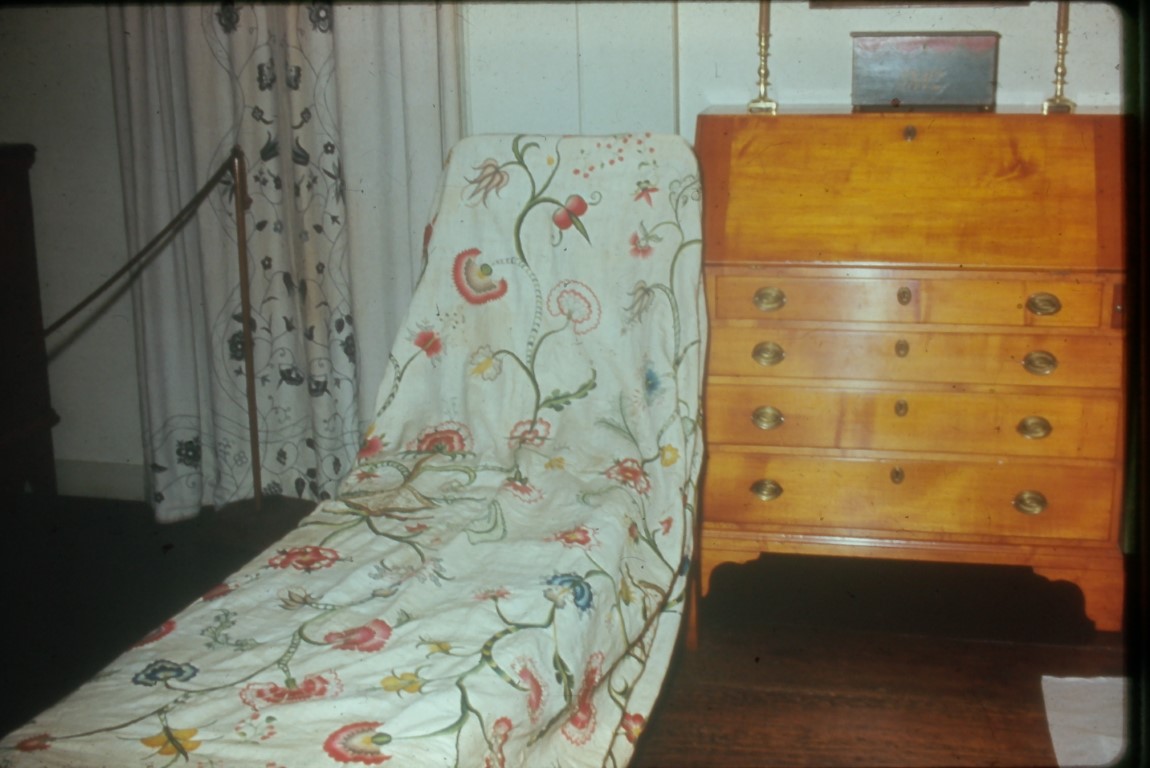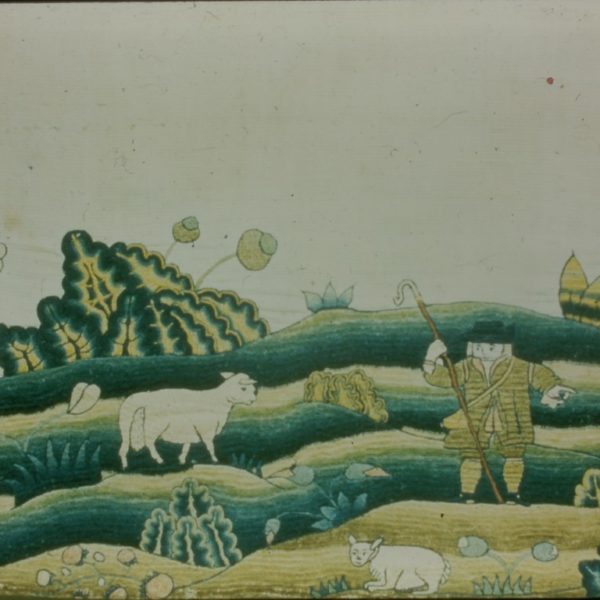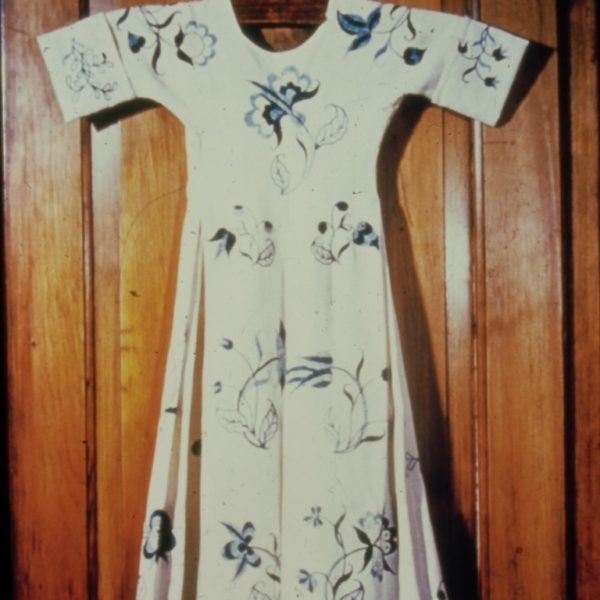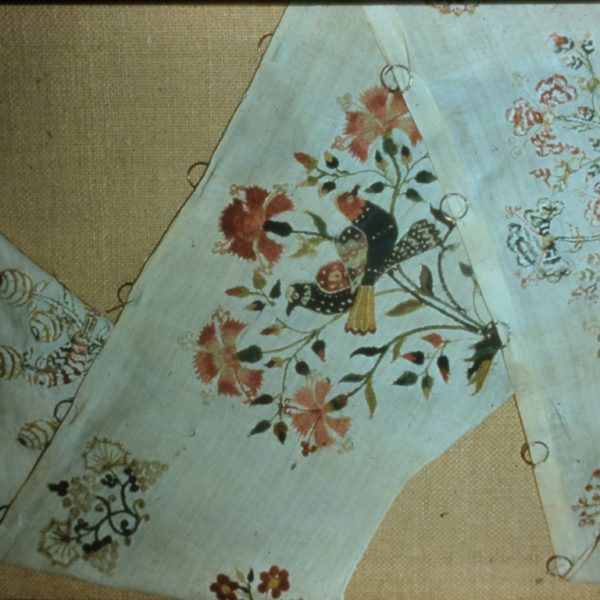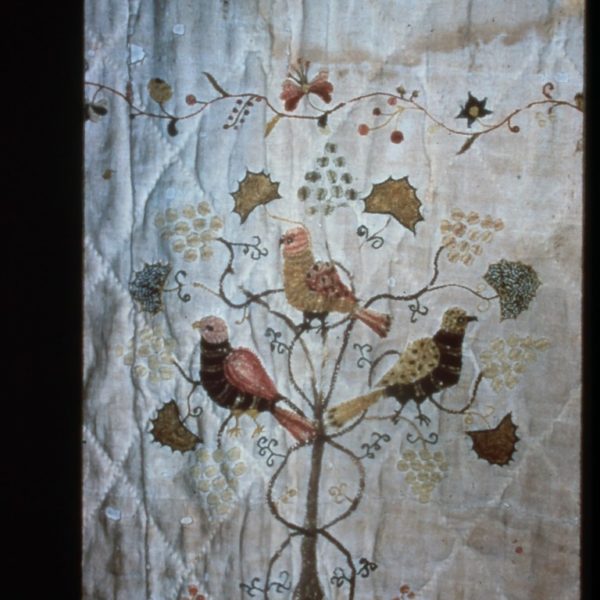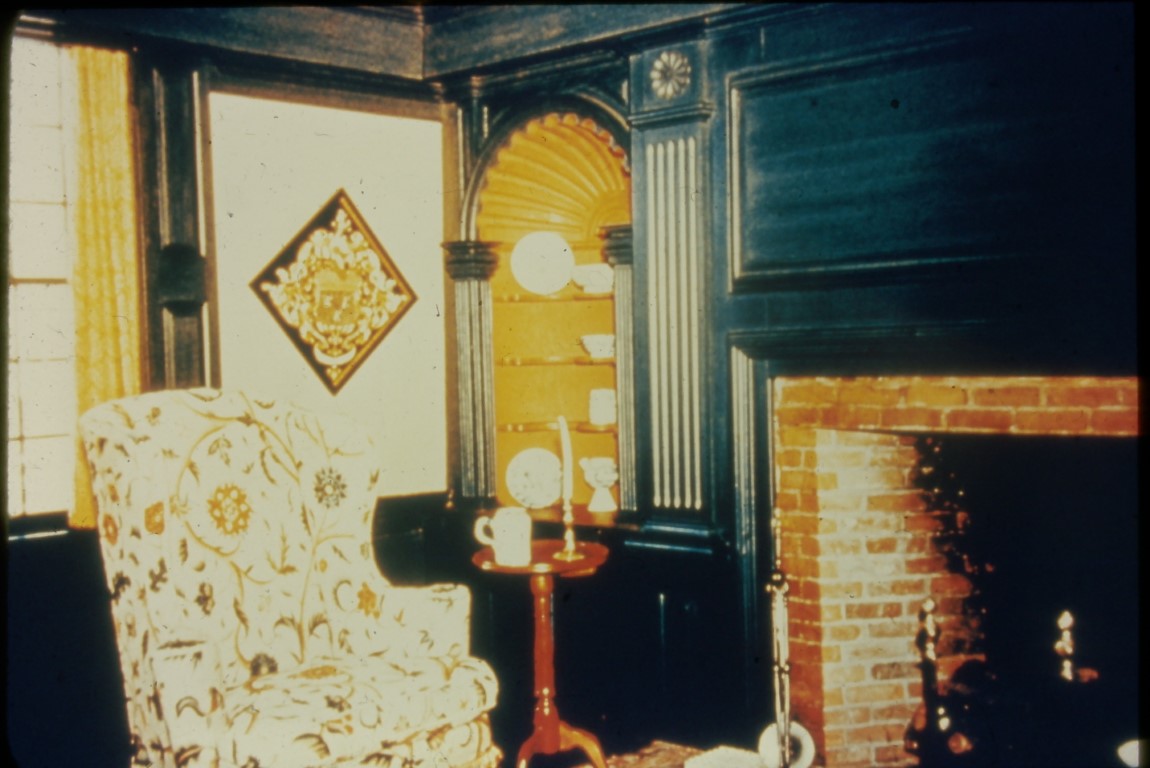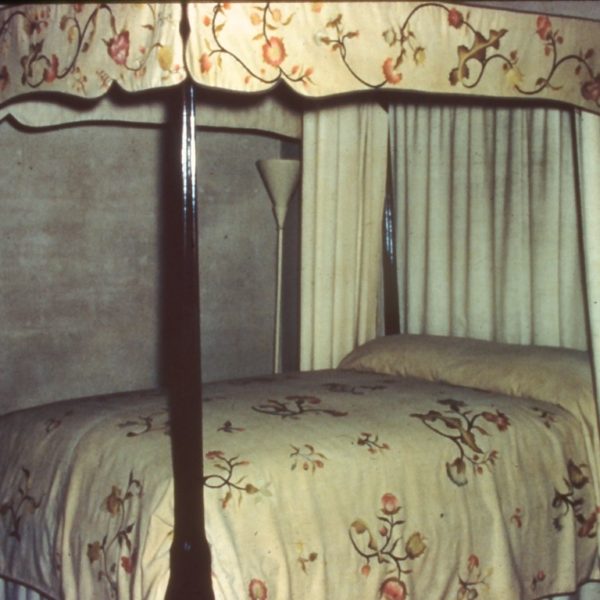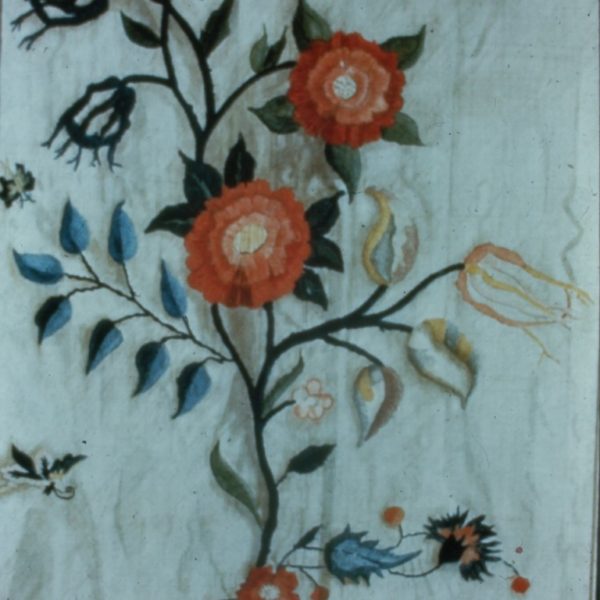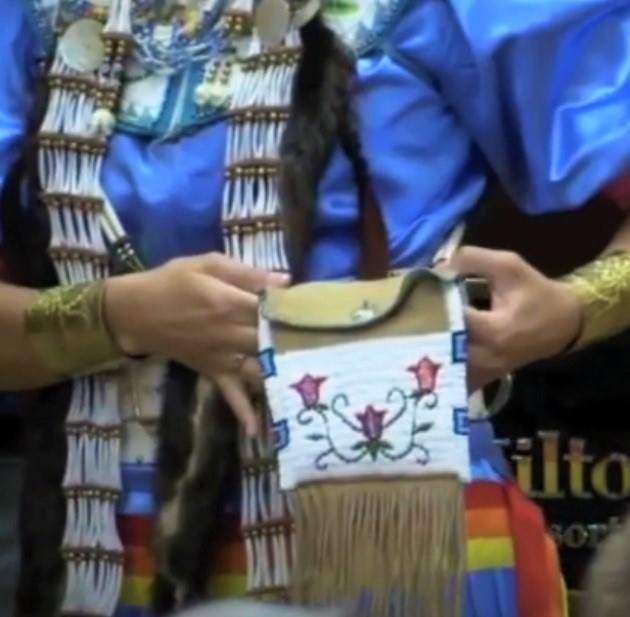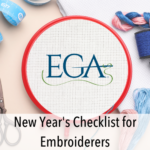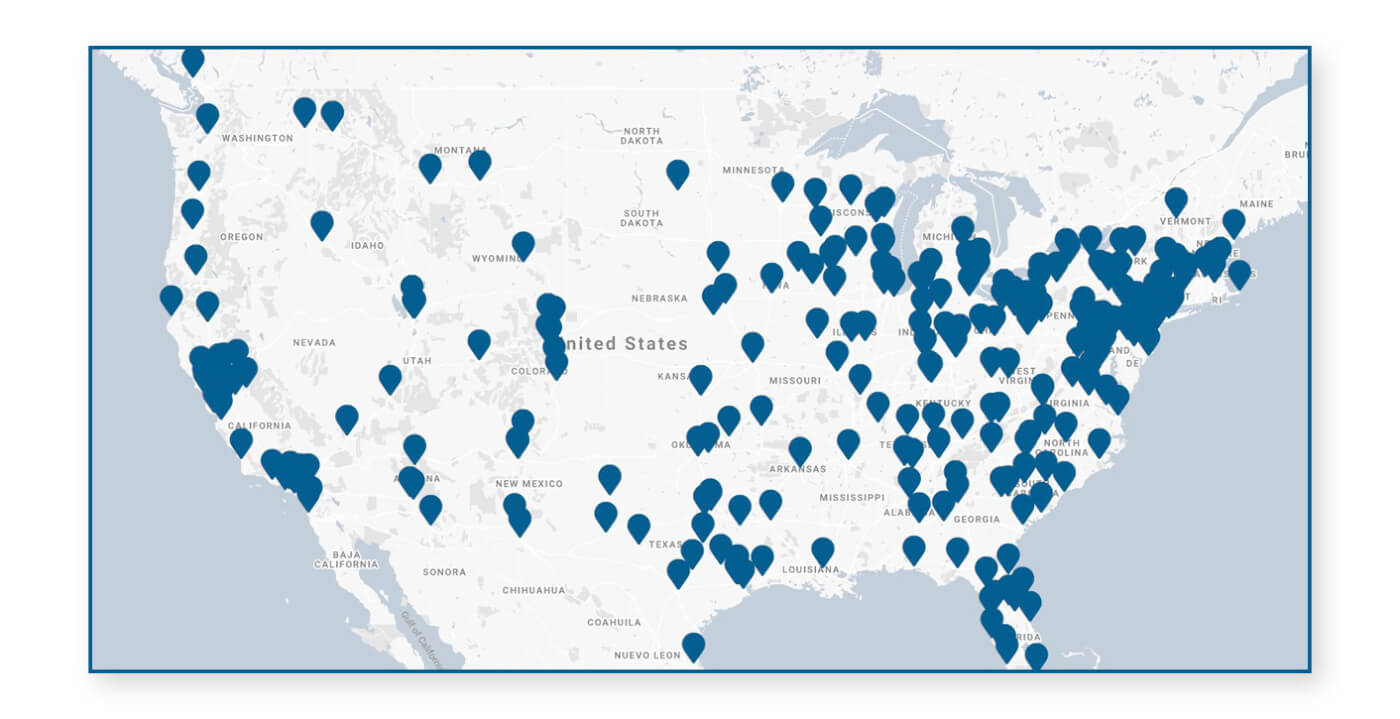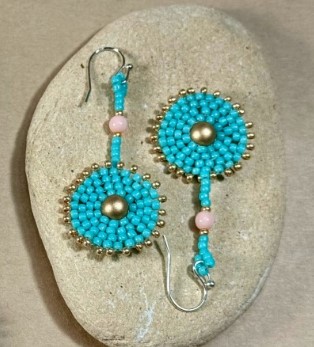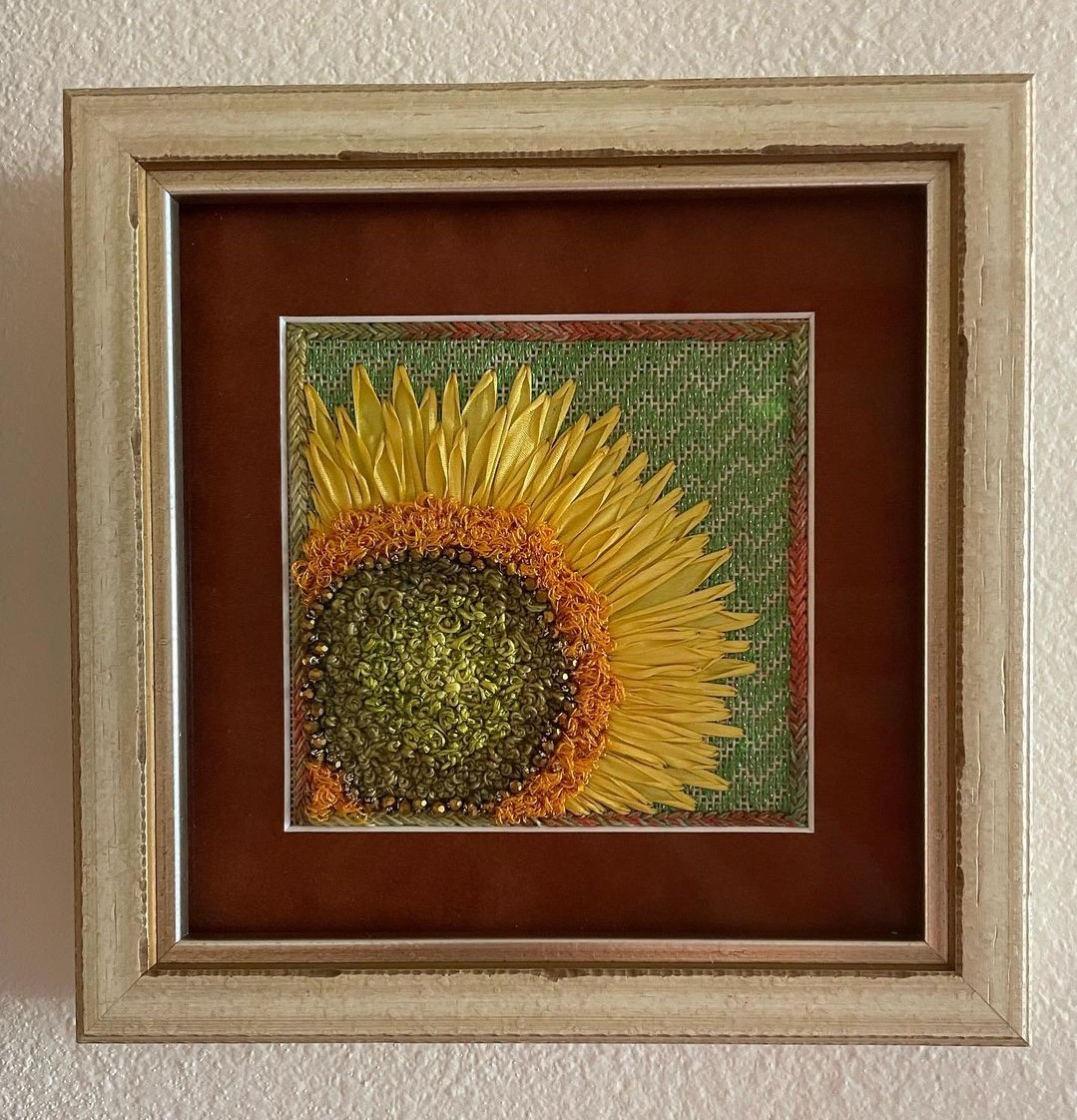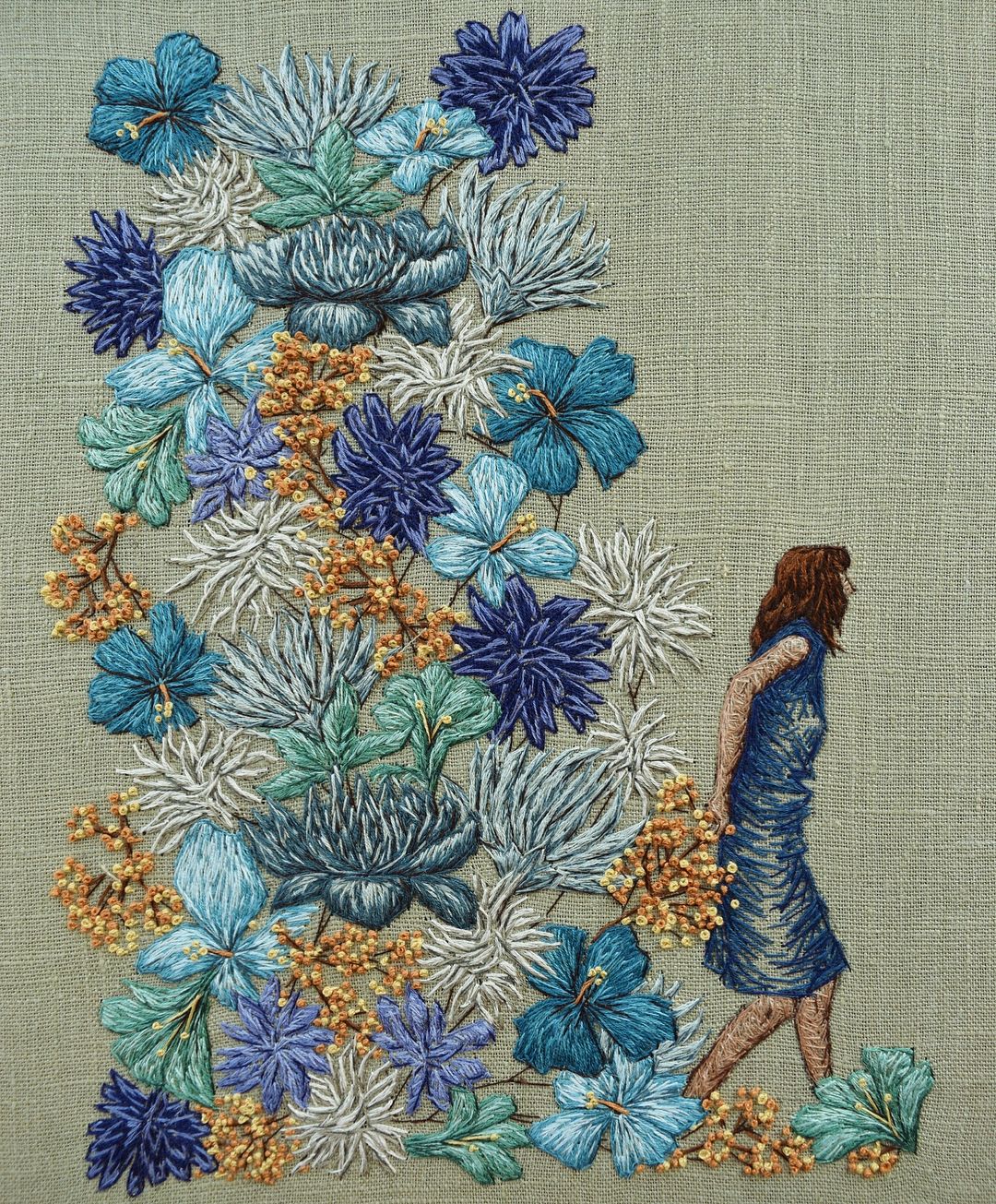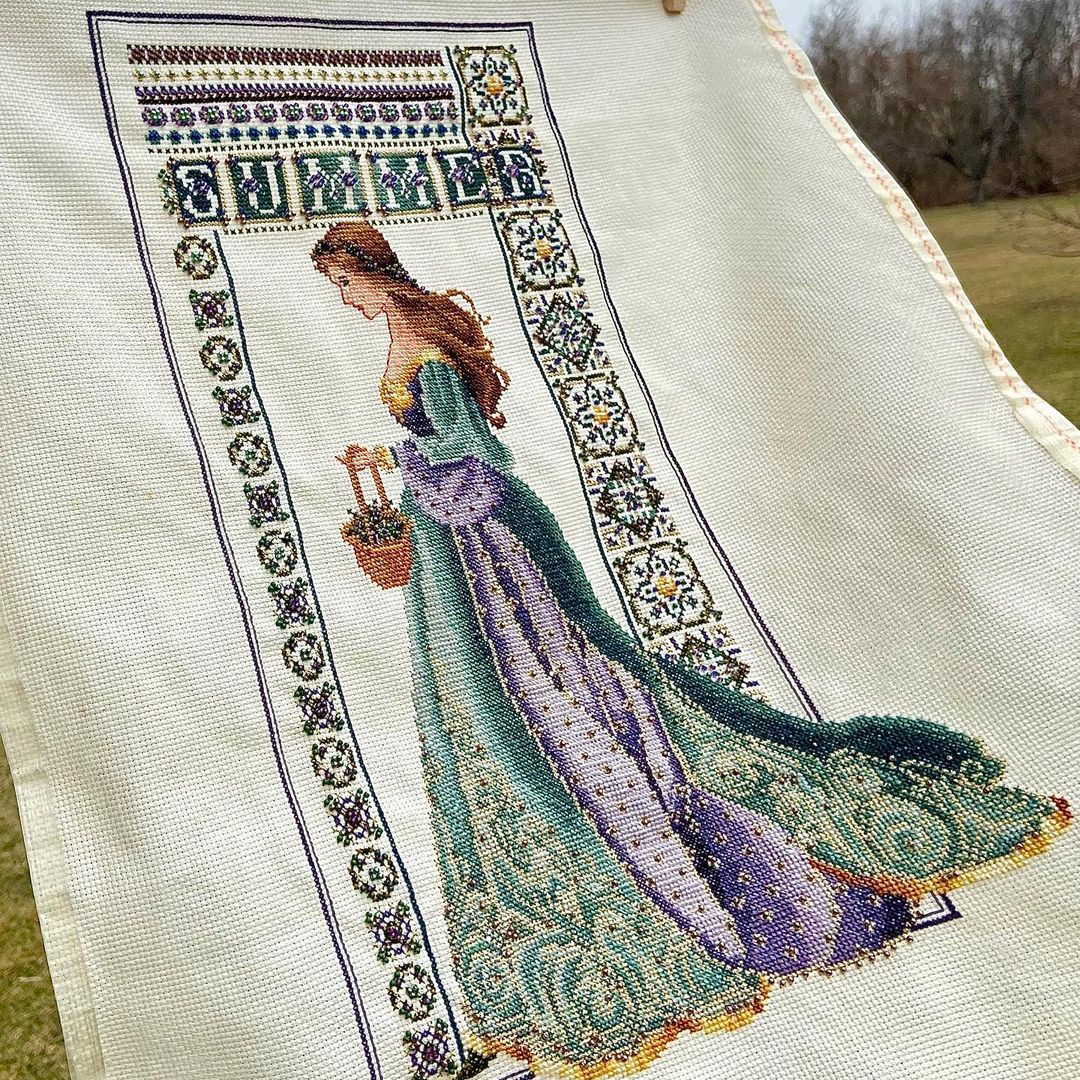Have you checked out our Slideshows & Presentations page? If you are an EGA member, you have access to a growing list of slideshows showcasing amazing embroidery history as one of your member benefits. If you’re not a member yet, you may browse a selection of video series also available on that page. Get instant access to all the slideshows, plus a collection of over 70 Petite Projects and more, by joining us here!
The latest addition to our Slideshows & Presentations page is a presentation called Early American Crewel Embroidery donated to EGA by Muriel Baker and Mary-Dick Digges. We thank member Karen Bibb from our Louisville chapter for her help in digitizing this presentation.
Here’s a little more about the presentation from its original description: Crewel, also known as crewel embroidery, crewel work and Jacobean embroidery, is surface stitchery worked with wool yarn on a firm fabric. The stitches are freely worked, rather than counted.
The term “crewel” formerly referred to a two-ply, worsted wool yarn and probably came from an Anglo-Saxon word for a ball of thread. Today, crewel refers to a decorative form of embroidery in which wool yarn is used. A limited number of other threads may be used in accent stitches.
The earliest surviving crewel embroidery is the Bayeux Tapestry, dated 1067-1070 AD. During the Elizabethan era (1558–1603), the British East India Company opened trade routes to the Far East, and new embroidery designs flowed from east to west. There is much symbolism in the designs of this period, and the colors were generally monochromatic, frequently in blues and greens, with an occasional red.
With the advent of the Jacobean era (James I, 1603-1625), the fanciful “Tree of Life” designs were frequently seen and the colors were brighter. The Queen Anne period (1702-1714) saw the use of silks replacing wools with the designs much lighter in appearance.
In Colonial America, fewer stitches were used in crewel embroidery. The New England laid stitch became popular because of its economical use of wool yarn.
Each slideshow also includes a link to download a PDF with slide descriptions which will help chapters wanting to share the presentation as a chapter activity. Additional formats for chapter presentation are available upon request, contact us and we’ll assist you with that.
Enjoy a small selection of the slides below and visit the slideshow here to see the entire presentation.
